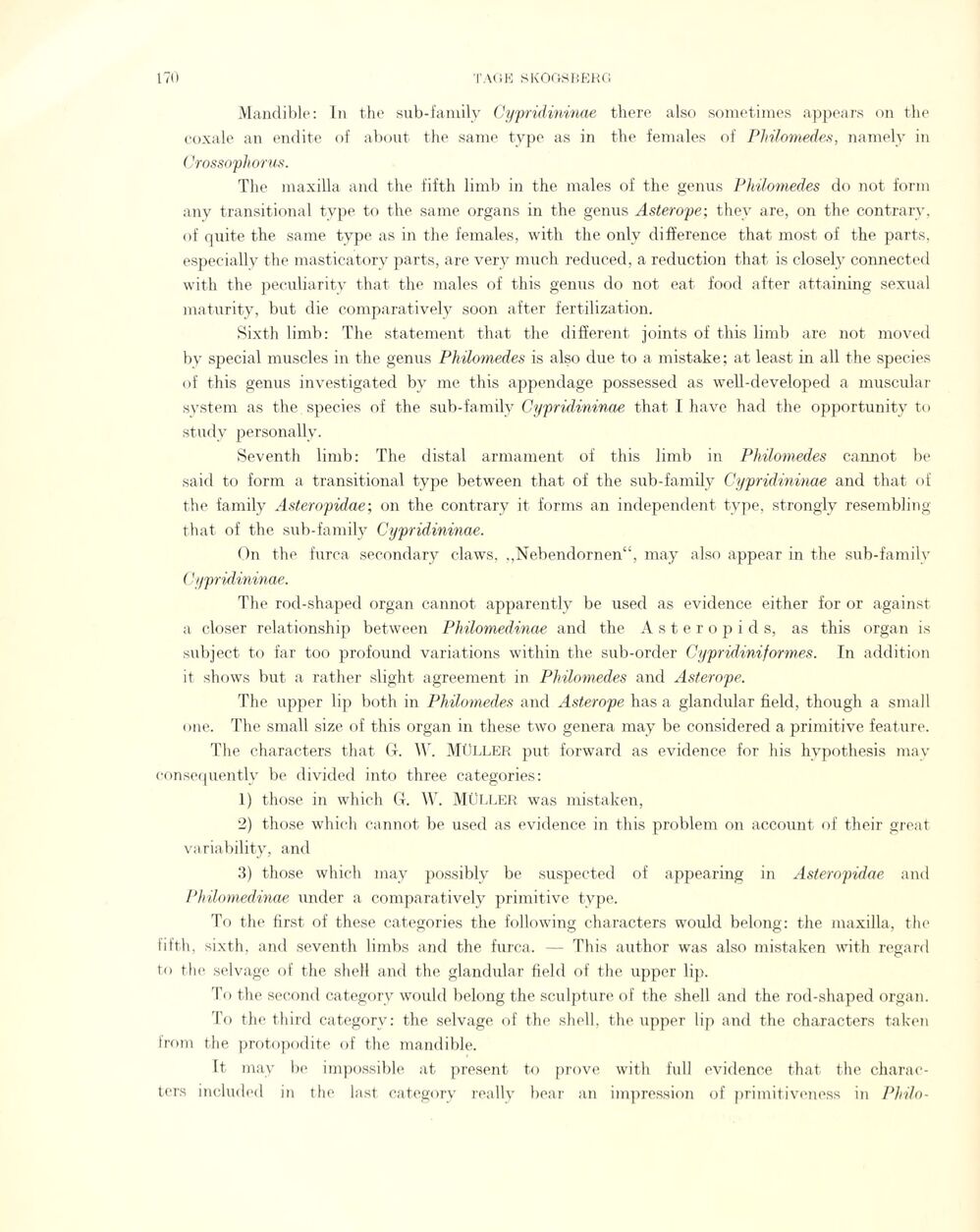
Full resolution (JPEG) - On this page / på denna sida - Sidor ...

<< prev. page << föreg. sida << >> nästa sida >> next page >>
Below is the raw OCR text
from the above scanned image.
Do you see an error? Proofread the page now!
Här nedan syns maskintolkade texten från faksimilbilden ovan.
Ser du något fel? Korrekturläs sidan nu!
This page has never been proofread. / Denna sida har aldrig korrekturlästs.
Mandible: In the sub-family Cypridininae there also sométimes appears on the
coxale an endite of about the same type as in the females of Philomedes, namely iti
Crossophorus.
The maxilla and the fifth limb in the males of the genus Plnlomedes do not form
any transitional type to the same organs in the genus Asterope; they are, on the contrary,
of quite the same type as in the females, witli the only difference that most of the parts,
especially the masticatory parts, are very much reduced, a réduction that is closely connected
witli the peculiarity that the males of this genus do not eat food after attaining sexual
maturity, but die comparatively soon after fertilization.
Sixth limb: The statement that the different joints of this limb are not moved
by special muscles in the genus Philomedes is also due to a mistake; at least in all the species
of this genus investigated by me this appendage possessed as well-developed a muscular
system as the species of the sub-family Cypridininae that I have had the opportunity to
study personally.
Seventh limb: The distal armament of this limb in Philomedes cannot be
said to form a transitional type between that of the sub-family Cypridininae and that of
the family Asteropidae; on the contrary it forms an independent type, strongly resembling
that of the sub-family Cypridininae.
On the furca secondary claws, ,,Nebendornen“, may also appear in the sub-family
Cypridininae.
The rod-shaped organ cannot apparently be used as evidence either for or against
a doser relationship between Philomedinae and the Asteropids, as this organ is
subject to far too profound variations within the sub-order Cypridiniform.es. In addition
it shows but a rather slight. agreement in Philomedes and Asterope.
The upper lip both in Philomedes and Asterope has a glandular held, though a small
one. The small size of this organ in these two genera may be considered a primitive feature.
The characters that G. W. MÜLLER put forward as evidence for his hypothesis may
consequently be divided into three categories:
1) those in which G. W. MÜLLER was mistaken,
2) those which cannot be used as evidence in this problem on account of their great
variability, and
3) those which may possibly be suspected of appearing in Asteropidae and
Philomedinae under a comparatively primitive type.
To the first of these categories the following characters would belong: the maxilla, the
fifth, sixth, and seventh limbs and the furca. — This author was also mistaken with regard
to the selvage of the shell and the glandular held of the upper lip.
To the second category would belong the sculpture of the shell and the rod-shaped organ.
To the third category: the selvage of the shell, the upper lip and the characters taken
from the protopodite of the mandible.
It may be impossible at present to prove with füll evidence that the
characters included in the last category really bear an impression of primitiveness in Philo-
<< prev. page << föreg. sida << >> nästa sida >> next page >>